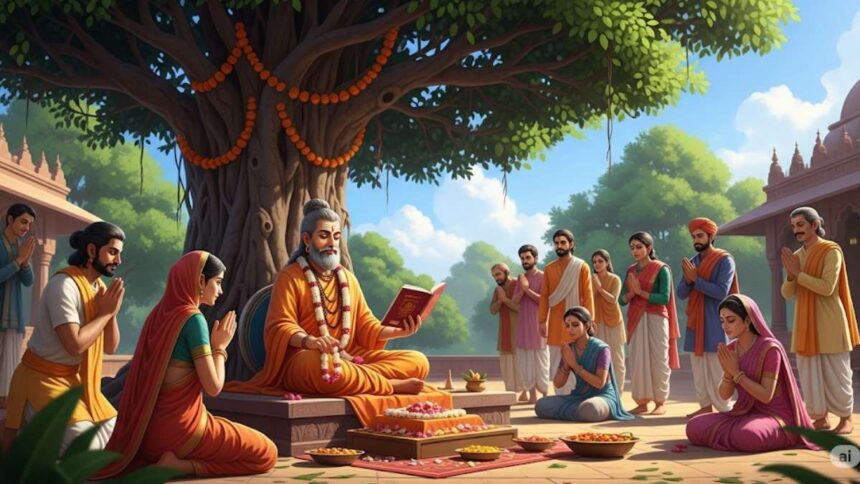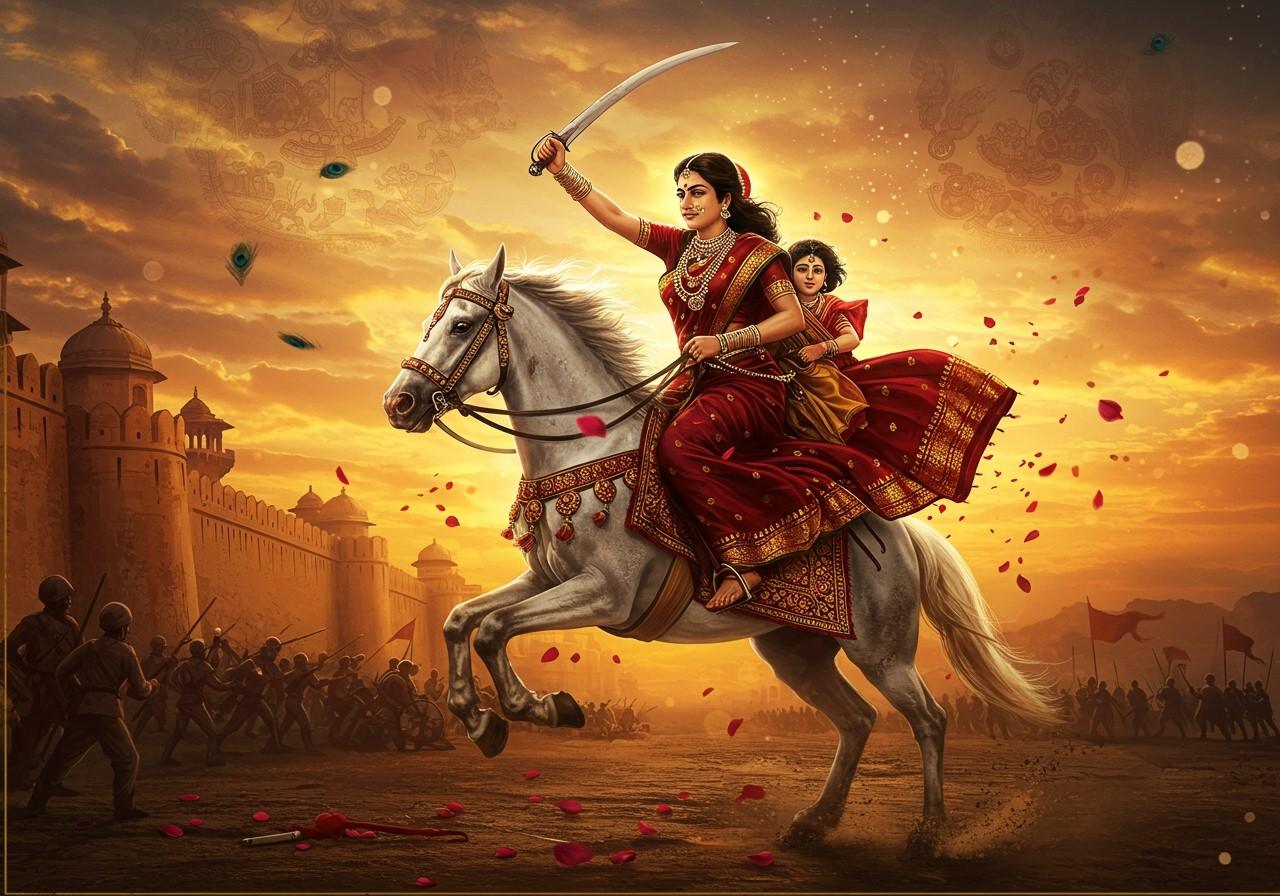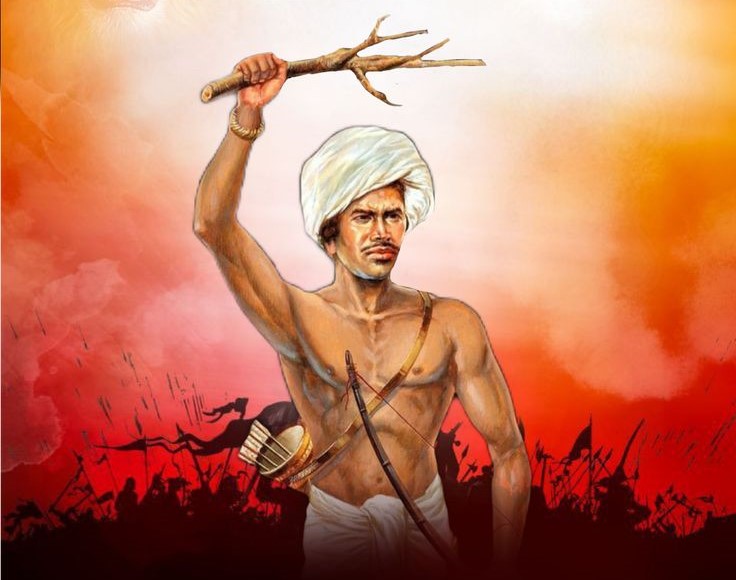By Ranjan Das
"ऋषेःप्रणीतंगोत्रंतुनात्मनःकुलमित्यपि।
ज्ञानतोब्रह्मणःश्रेष्ठंगोत्रंपवित्रमीरितम्॥"
The Mahabharata (Anushasana Parva, Chapter 141, Verse 64)
“The Gotra is established by the Great Sages(Rishi), and not by one's personal lineage.
The purest Gotra is based on knowledge of the Brahman, and this is considered supreme.”
Sanatana : The Eternal Way
Sanatana, often coined as the “Eternal Way of Life,” is the oldest continuously evolving tradition in the world. It is deeply enrooted in an animistic understanding of the universe, wherein all elements of nature - rivers, mountains, trees, animals, birds, stones, fishes etc. are seen as manifestations of the divine. This core intrinsic reverence for nature reflects an existential view where the cosmos is conceived as alive, interconnected, and sacred. The elements of fire, air, earth, water, and space (Pancha Bhoota) are considered as pantheistic forces, and they are symbolically given some shapes in the form of rituals, practices, and beliefs in daily life. Unlike the other institutionalised Abrahamic faiths, in Sanatana, the nature is not something to be conquered or exploited, but rather, it is something to be cherished, honoured, and understood as part of a larger spiritual continuum. This deep connection with nature of Sanatana extends into the celebration of seasons, agricultural cycles, and celestial movements, all seen as divine rhythms that we, the humans are also an intuitive part of.
The term “Sanatan”, derived from the Sanskrit etymological root “sanātana,” meaning eternal or perpetual, and it signifies some entity which is unchanging in nature; independent of time. The prefix "sanā" implies a constant, enduring essence, while "-tana" denotes continuity and persistence. Thus, “Sanatan” describes a quality that remains unaffected by the passage of time. This term is often closely linked with “Sanatana Dharma,” which refers to what is commonly called as Hinduism, suggesting a tradition viewed as eternal and universal, transcending the temporal changes. Conversely, “Sanskriti”, derived from “sanskrit”, meaning refined, cultured or cultivated. “Sanskriti” combines the prefix “saṃ,” meaning together or equal, with “kṛiti,” meaning done or created. “Sanskriti” thus refers to a culture that has been meticulously developed and elevated through evolution, reflecting advanced societal and intellectual progress. Combined, “Sanatan Sanskriti” translates to “Eternal Culture” or “Perpetual Civilization,” describing a cultural heritage that remains timeless and significant through the ages. So, it is basically a civilisational trait that has preserved its core values, traditions, and wisdom across generations, showcasing a refined and enduring legacy. Sanatana Dharma is not so much a conventional “religion” in the Western sense of the word but it is better understood as a confluence of all pervasive, heterogenic human Sanskriti. The word “Dharma” which is often translated as “religion” itself means far more than usual “religion”; it signifies the natural order, duty, ethical conduct, and righteousness that uphold the universe. It is about living in perfect harmony with the cosmic laws and fulfilling one's role within the society and the natural world. Conventionally, the word “religion” often implies a set of dogmatic beliefs or a particular faith in the divine, while Dharma is about actions, duties, and responsibilities that maintain balance and well-being, both individually and collectively. Thus, Sanatan Dharma or Sanatan Sanskriti can be understood interchangeably and it is a holistic system of values, ethics, rituals, and spiritual practices that diffuses every aspect of life. At the same time, this is far beyond the limited scope of institutionalized religion.
Sanatana, by nature of it, is always dynamic and evolving. While instilled in ancient practices, it has adapted to changing social, cultural, and historical contexts. The Epical texts, philosophies, and practices of Sanatana have seen reinterpretation over millennia - whether through the Vedic doctrines of offerings i.e. Karma-kanda, the rise of philosophical schools like Vedanta and Samkhya, or the devotional movements of Bhakti and Tantra. This ability to evolve without losing its original essence allows Sanatan Dharma to remain a living tradition. Rather than uncompromising adherence to any dogma, it emphasizes spiritual growth and realization that makes room for personal experiences of the divine. This adaptability is not confined to any specific scriptures, prophets, or a set of rigid doctrines. It is rather a diverse collection of philosophies, practices, and cultural expressions that encourages one to opt for a chosen path of the spiritual quest for Self-realisation.
The Divine Essence of Guru Purnima in Sanatana Sanskriti
Guru Purnima, a deeply revered occasion in Sanatan Sanskriti, is a venerable day devoted to honour the Gurus. A Guru is the divine guide who dispels ignorance and illuminates the path of wisdom in the spiritual quest. Celebrated on the full moon day (Purnima) of the month of Aahar i.e. Ashadha month of Hindu calendar (Months between June-July according to the Gregorian calendar), this day transcends mere festivity, symbolizing the timeless transmission of spiritual knowledge through the Guru-Shishya Parampara, the holy disciplic succession of teacher-disciple lineage that lies at the heart of Sanatana Dharma. It represents the Guru's essential role not only as a teacher but as a vessel of wisdom, guiding the seekers toward enlightenment. At the heart of this spiritual tradition lie the concepts of “Gotra” and “Guru Dakshina,” which have unfortunately been distorted over centuries. What was once understood as a mark of spiritual lineage, Gotra, has often been reduced to a mere indicator of caste or ancestry. Similarly, Guru Dakshina, originally a symbol of gratitude for divine wisdom imparted, is now often seen as merely a material exchange. To reclaim the true essence of these concepts, we must revisit the intertwined significance of Guru Purnima, Gotra, and Guru Dakshina, and reawaken their original purpose within the all inclusive framework of Sanatana Sanskriti.
Guru Purnima and Gotra : Honouring the Eternal Mentor
In its truest essence, the Guru imparts the wisdom of Self-realization, teaching that the individual “I” is an inseparable part of the vast cosmic manifestation and guiding one to the profound understanding that this very “I” is eternal and immortal. The origins of this practice trace back to Bhagawan Shiva, revered as the Adi Guru (the primordial teacher). According to Vedic lore of Shiva Purana, Skanda Purana etc., Bhagawan Shiva developed this system of Self-realization, coined as Yoga and he imparted the profound knowledge system of yoga to the Saptarishis - the seven great sages - who became the first recipients of this divine wisdom. This transmission of Yoga gave birth to the Guru-Shishya Parampara, establishing the lineage that forms the spiritual backbone of SanatanV Dharma. Shiva himself has decreed explicitly that the Saptarishis should evolve their unique approaches by further advancing and refining the practice of Yoga.
These Saptarishis, the seven sages -Vashistha, Vishwamitra, Atri, Bharadwaja, Gautama, Kashyapa, and Agastya did further enhancement to the system and consequently, they became the progenitors of the “Gotra” system, establishing various spiritual schools whose teachings were passed down through the generations. These schools had equal status in all sense. The term Gotra is derived from two Sanskrit words: “Go,” which refers to the Vedas – the ancient scriptures embodying the highest knowledge and “Tra,” meaning protector or preserver. The word Veda itself comes from the root “Vid,” meaning “to know,” or “quest” signifying the ultimate repository of spiritual and cosmic wisdom. Thus, Gotra originally signified one's spiritual connection to a particular lineage of Vedic knowledge, placing the individual under the protection and guidance of that specific school of thought. This concept was designed to align individuals with one of the streams of wisdom passed down by the revered Saptarishis, who were made the custodians of divine knowledge by the Adi Guru, Bhagawan Shiva. Rather than denoting a biological heritage, Gotra offered an individual the spiritual shelter of a particular Vedic tradition, linking them to the eternal wisdom of the Rishis(sages). For instance, an individual who followed the teachings of Rishi Gautama or Rishi Bharadwaja would belong to the Gautama Gotra or Bharadwaja Gotra, signifying not an inherited genealogical trait, but rather a profound spiritual commitment to Rishi Gautama’s or Rishi Bharadwaja’s Vedic insights. This affiliation was determined obviously by one's dedication to a particular stream of knowledge and spiritual practices as taught by a Guru. Disciples, through their deep spiritual alignment, adopted the Gotra of their teacher, reflecting a bond with the teachings of a particular sage. In this way, the Gotra system transcended biological lineage, embracing a more universal and meritocratic approach to the transmission of divine knowledge.
As time progressed and new sages contributed significantly to these system of transcendental practices, additional Gotras were evolved and established. For instance, the Parashara Gotra evolved from the teachings of Rishi Parashara, the grandson of Vashistha and the father of Veda Vyasa. Though not one of the original Saptarishis, Parashara's deep influence on Vedic literature and his authorship of key scriptures, including the Vishnu Purana, merited the creation of a new Gotra in his name. Similarly, Muni Kapila with his significant contributions in Samkhya philosophy established Kapil Gotra. Rishi Jamadagni, another significant figure, founded the Jamadagni Gotra, renowned for his spiritual austerity and fathering Parashurama, an incarnation of Vishnu. Similarly, Rishi Sandilya, noted for his contributions to Upasana (devotional practices) and Bhakti (devotion), established the Sandilya Gotra, extending the reach of spiritual knowledge through his unique insights into devotional worship.
The organic nature of this system is further highlighted by other influential sages like Kanva and Bhrigu. Kanva, a disciple of Vishwamitra and a seer of numerous hymns in the Rig Veda, established the Kanva Gotra, while Rishi Bhrigu, known for his pioneering insights into astrology and metaphysical thought, founded the Bhrigu Gotra. These sages were not part of the original seven, but their significant spiritual contributions expanded the Gotra system, demonstrating its flexibility and its capacity to honour wisdom over mere bloodline. Rishi Garg, celebrated for his astrological insights and his profound understanding of cosmic cycles, further expanded the spiritual heritage of Gotra. His contributions, along with those of sages like Jamadagni and Sandilya, continue to hold immense value in the transmission of Vedic wisdom. Ultimately, the Gotra system reflects its original sacred purpose : to preserve and honour spiritual wisdom through a lineage of teachings, rather than through biological descent. The evolution of Gotras, from the foundational Saptarishis to sages like Parashara, Kanva, Sandilya, Kapil, Jamadagni, Bhrigu, and Garg, signifies the dynamic and living nature of spiritual knowledge. It is a testament to the fact that the transmission of divine wisdom was not bound by heredity but was a sacred lineage of those who pursued, preserved, and contributed to the spiritual wisdom. This sacred system of Gotra actually honours the legacy of Vedic wisdom as it has evolved and expanded through the ages.
The Corruption of Gotra and the Rise of Social Divisions
Over time, however, the original spiritual meaning of Gotra became obscured and corrupted. What was once a pure system of spiritual identification became rigidly tied to hereditary identity. The Gotra system, which was meant to enable unity and continuity in spiritual wisdom with freedom of choice, became a tool to reinforce the emerging Varna (caste) system. The Varna system attempted to impose a fixed social order. Gotra, became misunderstood as a marker of caste purity, perpetuated the false belief that spiritual worth could be inherited by birth. One of the manifestations of this distortion was the practice of prohibiting marriages within some Gotras. Initially, this rule might be a practical measure to prevent inbreeding within close communities, but over time, it was transformed into a tool to enforce caste boundaries. Gotra, once an indicator of spiritual lineage, now became a means of enforcing social exclusivity, thwarting its connection to the universal and egalitarian principles of Vedic wisdom.
This misinterpretation starkly contradicts the teachings of the Bhagavad Gita, which states explicitly that one’s Varna,( caste) is determined by their guna (innate qualities) and karma (actions), and not their birth. In the original Vedic tradition, individuals were honoured for their spiritual contributions and commitment to their Guru’s teachings, not for their biological ancestry. Yet, as societal rigidity grew, the true spiritual essence of Gotra was lost, and it became yet another tool for enforcing caste-based discrimination.
Guru Dakshina: The Sacred Gift of Knowledge
Parallel to the Gotra system, the concept of Guru Dakshina - the offering given by a disciple to the Guru has also been misunderstood over time. Originally, Guru Dakshina was not about material offerings or wealth, but a token of profound gratitude for receiving divine wisdom. Its true form lay in the disciple’s commitment to using the Guru’s teachings to uplift themselves and the world. The story of Bhagawan Shiva and the Saptarishis offers a distinct example in Shiva Purana in this context. When Lord Shiva shared the knowledge of yoga with the sages, his only Guru Dakshina was their commitment to spreading and cultivating this wisdom for the benefit of all beings. In this way, Guru Dakshina represents not a physical offering but the disciple's responsibility to propagate the Guru’s teachings selflessly and for the greater good of all. This principle is echoed in the Isha Upanishad, which teaches that true fulfilment comes not from material gain, but from renunciation and service. Spiritual knowledge, by its very nature, is meant to be shared freely and widely. Thus, the most profound form of Guru Dakshina is the disciple’s dedication to embodying, disseminating and uplifting their Guru’s wisdom, ensuring that it benefits all living beings.
Final Thoughts : Restoring the True Spirit of Gotra for Hindu Unity
Reviving the spiritual and cultural foundations of Hindu society is essential for imbibing unity beyond the boundaries of caste and birth. The Gotra system, when restored to its original essence of spiritual alignment rather than hereditary identity, can play a key role in reinforcing solidarity within the entire Hindu community. Traditionally, Gotra was a marker of a disciple’s connection to a spiritual lineage, symbolizing the inclusive and universal values of Sanatana Dharma and Sanskriti, where the pursuit of wisdom transcended material and social distinctions. By returning to this understanding, we can overcome the divisions that were heightened by colonial interference with divisive interests and refocus on the core values of unity, mutual respect, and shared spiritual heritage. This shift would not only revive a collective identity but also ensure the continuity of cultural traditions enrooted in authentic spiritual practices.
The concept of Guru Dakshina, when understood in its true spirit, is a profound spiritual obligation rather than a material offering. It represents a disciple’s lifelong dedication to applying their Guru’s teachings for the upliftment of society. Guru Dakshina is an expression of gratitude through service, knowledge and skill sharing, and the betterment of others, rather than through material wealth. By realigning with this selfless principle, we breathe new life into the timeless values of our spiritual heritage and reinforce our responsibility towards the well-being of the larger community as a nation. As we restore the true significance of Gotra, Guru Purnima, and Guru Dakshina, we pave the way for the unification of Hindus, as once envisioned by M.S. Gowalkar : “The Hindu society is a living entity, united by cultural and spiritual bonds. It must stand as one, or risk losing its very existence.”
***
Acknowledgement : This essay is influenced by Dilip Goswamida of Palasbari, Binod Chetri of Tezpur, and Bijon Baruah of Houston, USA.
References:
- Nikhilananda, S., 1994. The Yoga Sutras of Patanjali: A Translation and Commentary. New York: Ramakrishna-Vivekananda Center
- Radhakrishnan, S., 1999. The Hindu View of Life. New York: Harper Collins.
- Shastri, A.K., 1999. Gotra: An Insight. New Delhi: Shree Publishers.
- Bühler, G., trans., 1886. The Laws of Manu. Oxford: Clarendon Press.
- Golwalkar, M.S., 1978. The Bunch of Thoughts. Bangalore: Jagarana Prakashana.
- Ghosh, D., 2016. Revisiting Gotra: A Modern Interpretation of Ancient Wisdom. Journal of Indian Philosophy, 44(3), pp.301-315.
- Varma, P., 2020. Spiritual Lineage: Understanding Gotra in Sanatan Dharma. Vedic Studies Journal, 12(1), pp.45-60.






